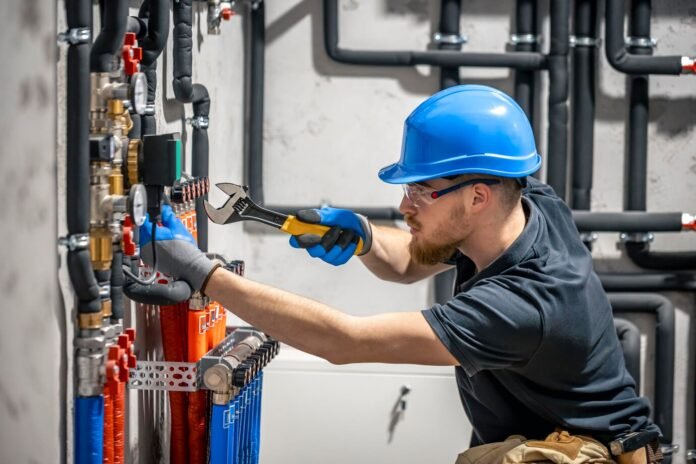Introduction
Compression fitting are widely used in plumbing, gas lines, and hydraulic systems to create secure, leak-free connections between pipes or tubing without the need for soldering or welding. These fittings are popular due to their ease of installation, durability, and ability to withstand high pressure. Whether in residential plumbing, industrial applications, or automotive systems, compression fittings provide a versatile and efficient way to join pipes while ensuring a tight seal.
1. What Is a Compression Fitting?
A compression fitting is a type of coupling used to connect two pipes or a pipe to a fixture by compressing a ferrule (or olive) against the pipe using a threaded nut. The compression action creates a watertight or airtight seal, preventing leaks. These fittings are commonly made from brass, copper, or stainless steel, offering resistance to corrosion and high pressure. Unlike soldered or glued connections, compression fittings can be disassembled and reused, making them ideal for repairs and modifications.
2. Components of a Compression Fitting
A standard compression fitting consists of three main parts: the compression nut, the ferrule (or compression ring), and the fitting body. The nut is threaded onto the fitting body, compressing the ferrule tightly around the pipe as it is tightened. The ferrule, usually made of brass or copper, deforms slightly to create a secure seal. The fitting body provides the connection point where the pipe is inserted. Each component plays a crucial role in ensuring a leak-proof joint, making the assembly simple yet highly effective.
3. How Does a Compression Fitting Work?
When a compression fitting is assembled, the pipe is inserted into the fitting body, and the compression nut is tightened over the ferrule. This compression creates a strong mechanical bond that prevents fluid or gas from escaping. The seal is maintained by the constant pressure exerted by the nut, ensuring long-term reliability without the need for additional adhesives or heat-based joining methods.
4. Advantages of Using Compression Fittings
Compression fittings offer several benefits, including ease of installation, as they do not require specialized tools or heating equipment. They provide a reusable connection, allowing for disassembly and reassembly when needed. These fittings are also versatile, working with various pipe materials such as copper, plastic, and PEX. Additionally, they are highly reliable in high-pressure applications, making them suitable for water supply lines, gas connections, and refrigeration systems. Their leak-resistant design reduces maintenance costs and enhances system longevity.
5. Common Applications of Compression Fittings
Compression fittings are used in a wide range of industries, including plumbing for connecting water supply lines, HVAC systems for refrigerant lines, and gas distribution for secure fuel connections. They are also found in automotive brake lines, hydraulic systems, and laboratory equipment where leak-proof joints are critical. Their adaptability makes them a preferred choice in both residential and commercial installations where durability and ease of maintenance are essential.
6. Installation Tips for Compression Fittings
To ensure a proper seal, it is important to cut the pipe cleanly and deburr the edges to prevent damage to the ferrule. The pipe should be inserted fully into the fitting before tightening the nut. Hand-tightening followed by a quarter to half turn with a wrench is usually sufficient—over-tightening can crush the ferrule and cause leaks. For plastic pipes, a support sleeve may be necessary to prevent deformation. Always check for leaks after installation by running water or gas through the system.
7. Potential Issues and Troubleshooting
While compression fittings are reliable, improper installation can lead to leaks. Common issues include overtightening, which can crack the ferrule, or undertightening, which fails to create a proper seal. If a leak occurs, disassembling the fitting, inspecting the ferrule for damage, and reassembling it with proper torque often resolves the problem. In some cases, replacing the ferrule may be necessary. Additionally, using the wrong type of fitting for the pipe material (e.g., metal ferrules on plastic pipes) can lead to failure.
Conclusion
Compression fittings provide a practical and efficient solution for creating secure pipe connections across various industries. Their simplicity, reusability, and ability to withstand high pressure make them a preferred choice for professionals and DIY enthusiasts alike. By understanding their components, working mechanism, and proper installation techniques, users can ensure leak-free performance and long-lasting reliability in their piping systems. Whether for plumbing repairs, gas lines, or hydraulic setups, compression fittings remain an essential component in modern piping solutions.


